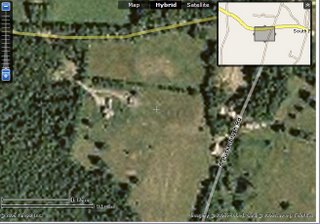
We recently purchased a house near Southern Pines NC for our anual jont to the South for horseback riding in March after skiing in Aspen. This is redneck territory as I met our neightor on her front porch with white legs because she was in the process of her annual leg shaving. It seemed to go rather well. She is a dear sweet person who currently has very smooth legs. The place we purchased is rehab in the most general sense of the term. Although Jeff Foxworthy said that we should find a car buried in the front and didn’t, pretty much everything else including several washer, dryers the odd stove and an number or rum bottles were there. The most interesting find was a decade old bottle of pickled pigs feet. It is a different culture for us Yankees. Hopefully our cold blood will adapt.





